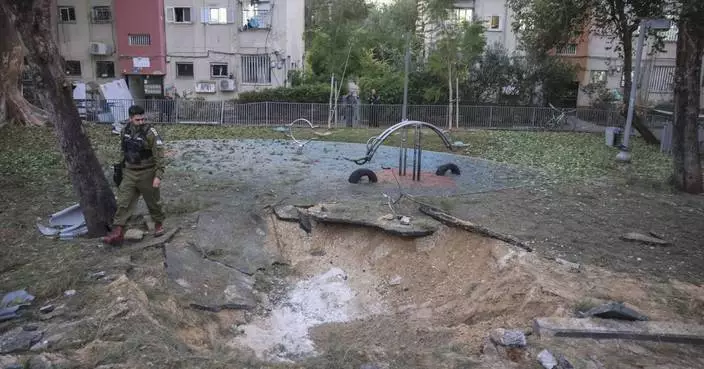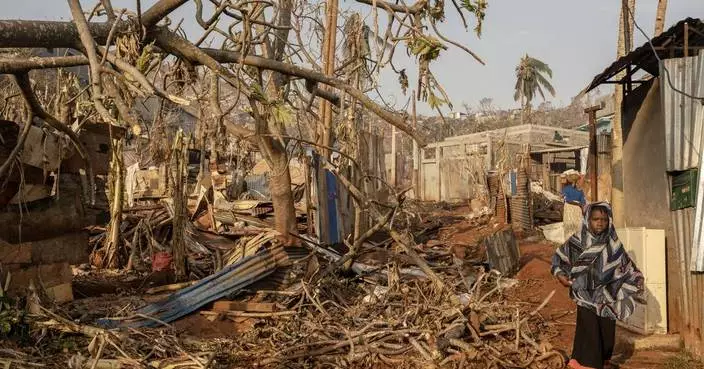Tens of thousands of students in the Southeast are dealing with school disruptions after Hurricane Helene wreaked havoc so severe — on homes, campuses and municipal power and water systems — that some districts have no idea when they will reopen.
While virtual learning helped during the COVID-19 school closures, that has not been an option for this crisis because internet and cellphone service has remained spotty since the storm struck in late September. In hard-hit western North Carolina, some districts warn students will miss up to a month of school, and others say they can't yet determine a timeline for returning to classrooms.
“I feel like a month is a lot, but it’s not something that can’t be overcome,” said Marissa Coleman, who has sent her four children to stay with grandparents in Texas because their home in North Carolina's Buncombe County has no running water. “But if we get further into Thanksgiving and Christmas, it’s like, how are they actually going to make this up?”
In mountainous Buncombe County, Helene swept away homes, cut power and destroyed crucial parts of the water system for Asheville, a city of about 94,000 people. The storm decimated remote towns and killed at least 246 people throughout the Appalachians, where massive cleanup efforts have been complicated by washed-out bridges and roads. It was the deadliest hurricane to hit the U.S. mainland since Katrina in 2005.
The Buncombe County School system, which serves over 22,000 students, told families Tuesday on the district's Facebook page no decision has been made "with regards to start date or length of day" because of a need to repair buildings, restore phone and security systems and redraw bus routes.
Even when schools reopen, educators worry the disruption could have profound effects on students' learning and emotional well-being.
Children who experience natural disasters are more prone to acute illness and symptoms of depression and anxiety, research shows. The physical and mental health impacts put them at greater risk of learning loss: Absences can undermine achievement, as can the effects of trauma on brain function.
The challenges come amid growing concerns about the impacts of climate change on students. Wildfires have swept through communities, displacing families. Many school systems with inadequate heating or air conditioning have closed during extreme weather or forced students and educators to endure sweltering or frigid temperatures. According to the World Bank, 400 million children lost school days because of “climate-related closures" in 2022.
Days after Helene made landfall, Hurricane Milton roared ashore last week farther south along the same Florida coast as a Category 3 storm. While about half the state's districts were closed, all of them they were planning to reopen by the end of this week.
Schools affected by Helene are trying to provide stability. The Buncombe district has suggested parents trade books with neighbors and friends for their kids. “Have them write, maybe about something they’re looking forward to when school starts again,” the district told parents on social media. “Turn everyday experiences into math problems.”
Cécile Wight, a mother of two in Asheville, said she has been grateful for concern shown by schools including surveys checking on families' well-being and an elementary school bus driver who took his own car to visit each child on his route.
“That has been huge, just having the emotional support from the school system and from the people we know at the school,” she said.
But uncertainty remains. Wight said her family is able to stay at their home because they have well water, but many other families have yet to return since evacuating. Most of Buncombe's 45 schools still lacked running water as of Tuesday, meaning they're unable to meet basic safety and hygiene standards.
Schools have have begun exploring whether it would be possible to open without running water, relying on portable bathroom trailers. In a letter to families, Asheville Superintendent Maggie Furman said the district is considering drilling wells at each school so they don't have to rely on city water.
Coleman said her kids are eager for some kind of normalcy.
“I understand the schools are going to have to take some time to find a way to open safely, and I support that 100%. But I definitely am not in the camp of ‘We need to wait until we get water back, until everything’s normal again to open.’ I just think that’s going to be too long,” Coleman said.
The Tennessee Department of Education is still trying to determine how many schools remain closed since Hurricane Helene and how many took too much damage to reopen.
Echoing the COVID-19 pandemic, several schools in Tennessee have postponed traditions like homecoming games, parades and dances. Many colleges are also granting extensions on application deadlines, officials say, to reduce high school seniors' stress.
In storm-drenched areas elsewhere, some early education providers may never reopen.
Private child care and preschool centers are particularly vulnerable in the aftermath of a natural disaster, said Militza Mezquita, senior advisor for education in emergencies at Save the Children. Many already operate on thin margins, meaning a temporary closure can easily turn permanent. As for-profit companies, they are also ineligible for many types of disaster aid. A natural disaster can wipe out 10% to 20% of providers, Mezquita said.
“Child care recovery is very critical to the whole recovery ecosystem,” Mezquita said, noting the people essential to recovery — road workers, cleanup crews, doctors and nurses — often have young children that need to be looked after. “If they are not able to adequately get their children in care, they can’t go to work.”
Despite the instability, educators like Heather Smith, who was named North Carolina’s Teacher of the Year in the spring, encourage families to see the lessons storms can provide. Smith brought along her two children, ages 8 and 4, to serve meals at her church.
“Our kids are learning so much every day, whether it’s about adversity, whether it’s about helping a community,” said Smith, who rode out the storm at her home in Waynesville.
Similarly, Wight has been taking her children to volunteer for relief efforts at a school. She said it has helped them feel active and involved in the community.
“If COVID taught us something, it's that we can make things work. The kids are resilient,” Wight said. “They will eventually catch up on the academic side of things.”
Associated Press writer Alia Wong contributed to this report.
The Associated Press’ education coverage receives financial support from multiple private foundations. AP is solely responsible for all content. Find AP’s standards for working with philanthropies, a list of supporters and funded coverage areas at AP.org.
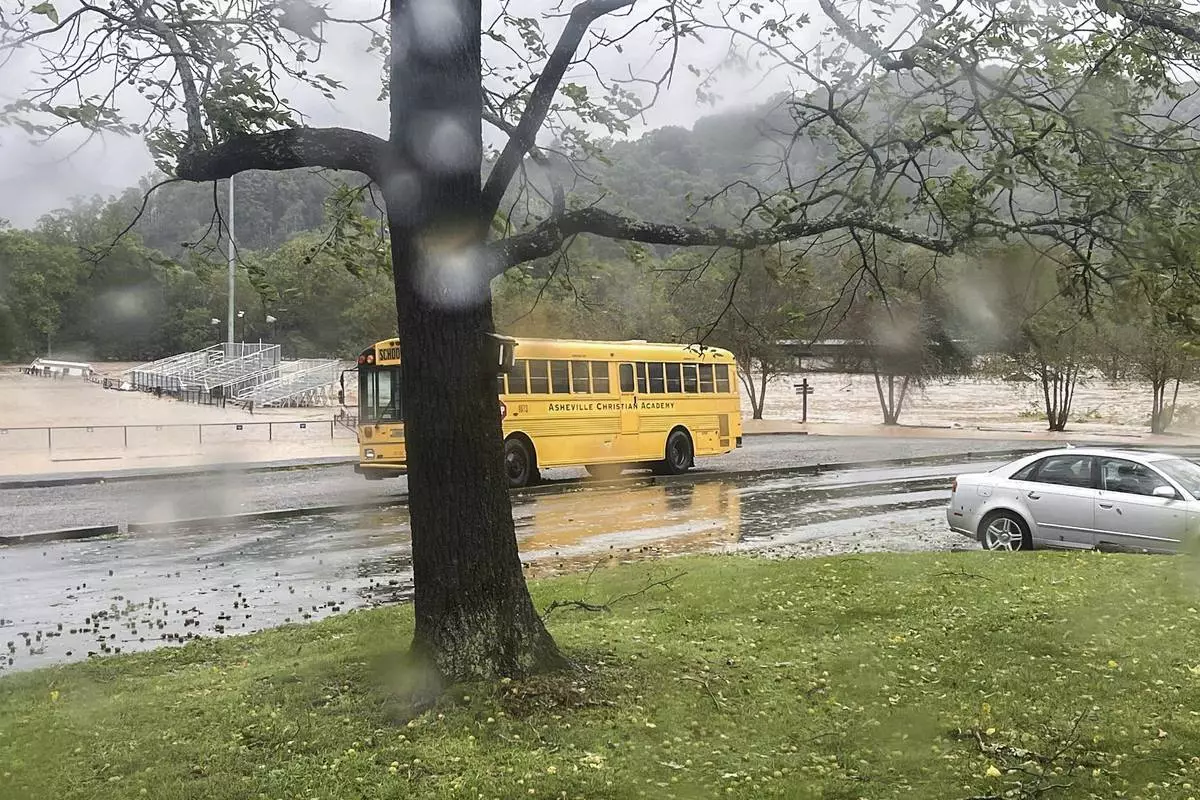
FILE - This photo provided by Kelly Benware shows flooding around the football field at Asheville Christian Academy in Swannanoa, N.C., on Friday, Sept. 27, 2024. (Kelly Benware via AP, File)
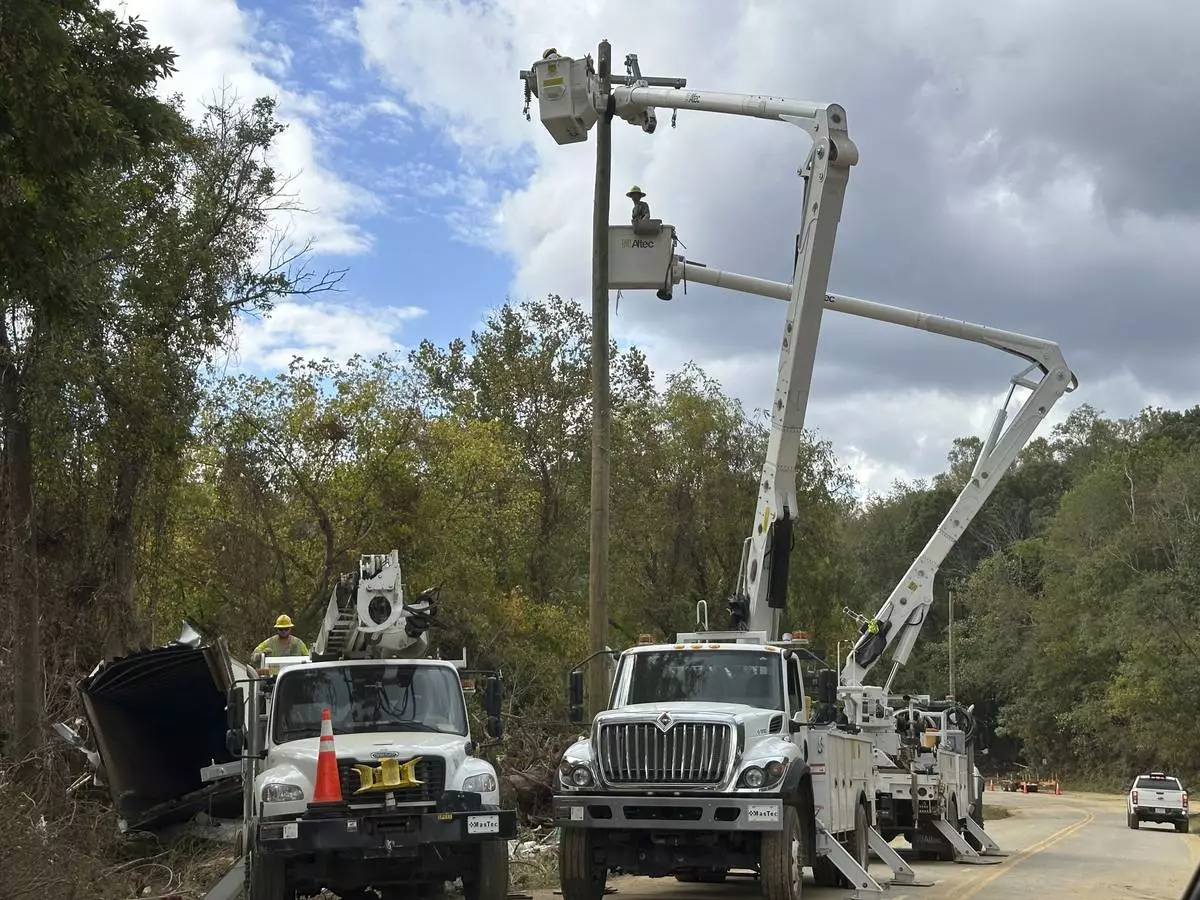
FILE - Contractors for Duke Energy rebuild destroyed electrical lines near the Swannanoa River in Asheville, N.C., Friday, Oct. 4, 2024. (AP Photo/Jeff Amy, File)
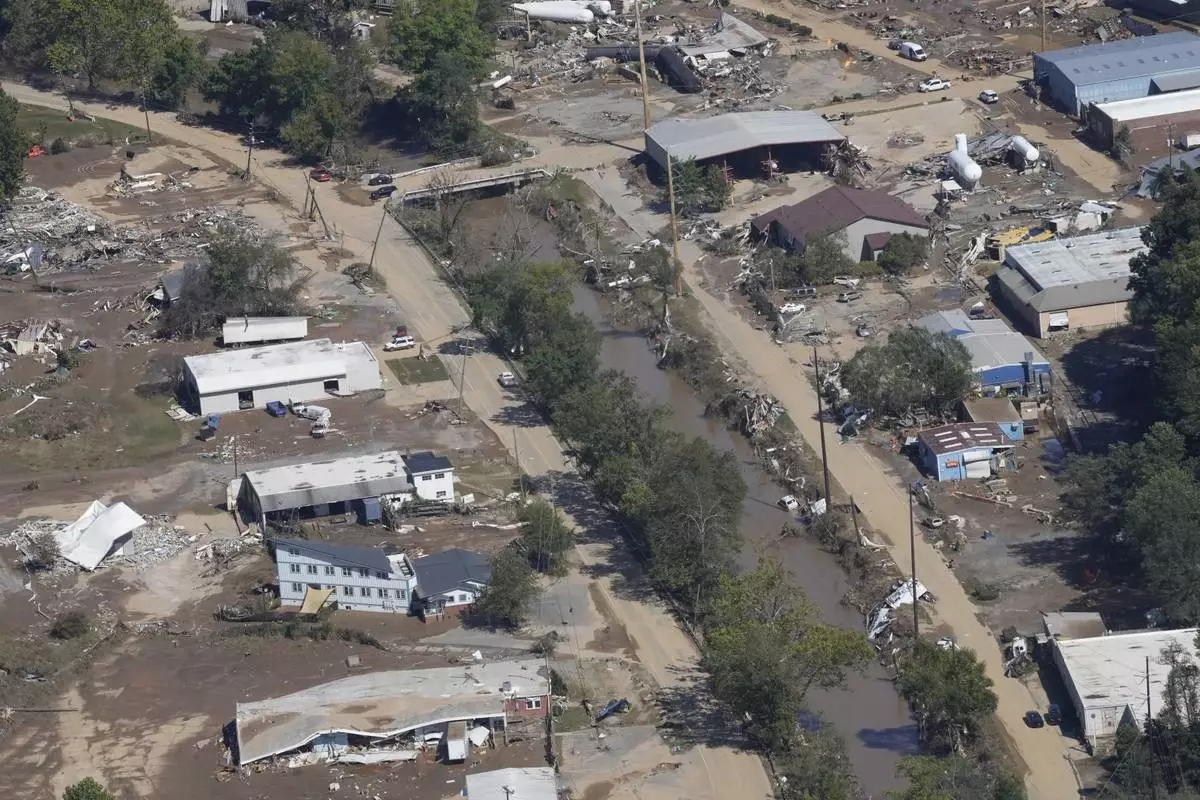
FILE - A view of damage in Asheville, N.C., is seen during an aerial tour with President Joe Biden who looked at areas impacted by Hurricane Helene near Asheville, N.C., Wednesday, Oct. 2, 2024. (AP Photo/Susan Walsh, File)
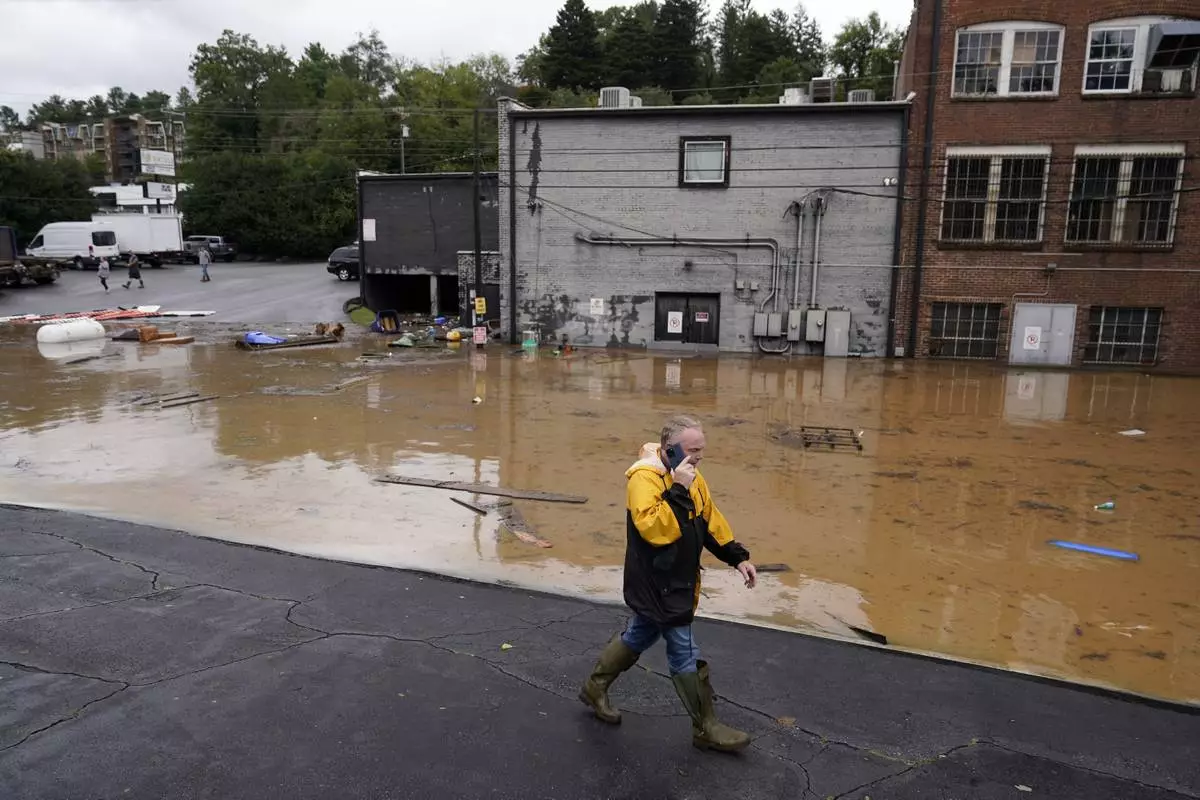
FILE - A man walks near a flooded area near the Swannanoa river, effects from Hurricane Helene , Friday, Sept. 27, 2024, in Asheville, N.C. (AP Photo/Erik Verduzco, File)














